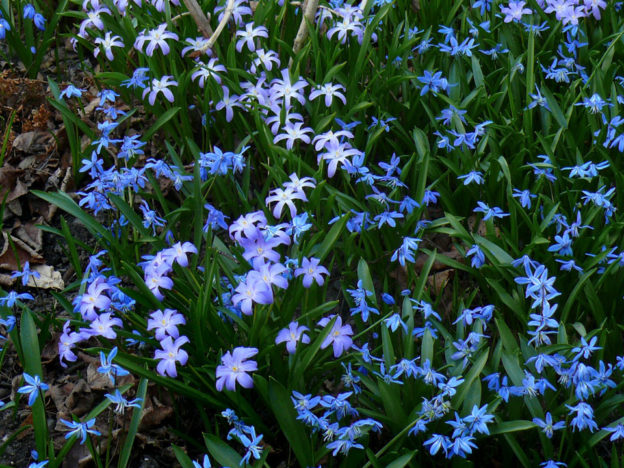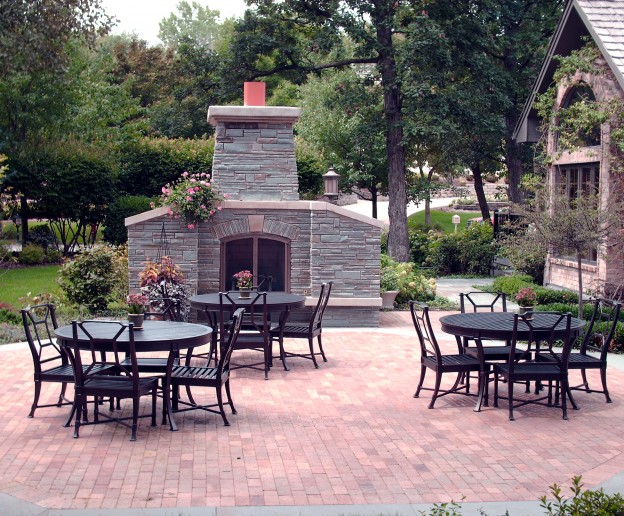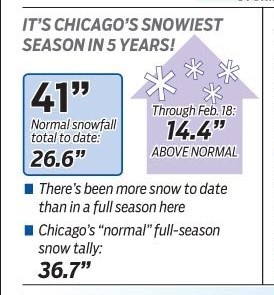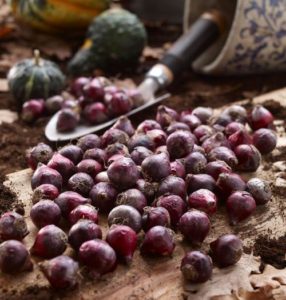
Tag Archives: landscape contractors


What’s the deal with Dirt
My guess is that many people don’t find dirt very interesting. But the truth is that people study it intensely. We actually employ someone who is a soils expert, Mike Curry!
So what exactly Is pulverized topsoil? Topsoil is the upper layer of the Earth’s crust, usually the top 2 to 8 inches. It has the highest concentration of microrganisms and organic matter and is where most of the soil’s biological activity occurs. Plants generally sink their roots into and obtain most of their nutrients from this rich layer.
This high concentration of organic matter is actually what turns soil black. So the darker it is, the more nutrients in the soil, the better your plants and turf will do. Ever notice “grey” colored dirt. It often occurs in areas where a lot of salt is applied during snow removal services. That’s because those microorganisms have been killed and the organic matter is leached out.
This is why it is so important to install mulch and compost in planting beds. It helps provide a protective layer and breaks down over time, reintroducing those beneficial nutrients back into that top layer of soil.
It’s also equally as important that you topdress your lawn with some kind of compost when core aerating and overseeding for the same reason.
Most people probably don’t know how topsoil is created. It’s a fairly simple process. Most often topsoil is taken from construction sites where there are large open spaces that need to be excavated anyway. That soil is then “pulverized” through a machine to remove any debris as well as giving it a more consistent texture that makes it easier to spread and fine grade.

What is Scilla?
What is Scilla?
We have probably all marveled at the beautiful fields of blue that pop up around this time of year. Customers ask me all the time in wonderment, “What is that?!”
Scilla is a member of the lily family. Most varieties bloom in spring whereas a few are fall bloomers. It is coveted for it naturalizing tendencies. So year after year they will slowly multiply to form that lovely blanket of blue. I always warn that they aren’t for the faint of heart. These are a true gardeners plant. As seen below, if they love their home they can take over.
A mass of ScillaThey like full sun locations with well drained soil. Plant them en masse for the best show. you can even pair them with a Tete e Tete daffodil, which is a lovely dwarf variety in a creamy yellow. Once they are done blooming, they are similar to other bulbs and do best if you let the leaves wilt. Other plants like ferns and hosta can be used to help mask the withering leaves as they come up as the scilla is nearing the end of its season.
See how tiny the Scilla bulbs are?Once the Scilla have put on their show they disappear completely, back into dormancy for their next display the following year. If you have never noticed this unique plant, take the time to look around…you won’t forget it once you see it.

Hire a Professional
You hear it all the time. If you are gong to hire someone for a project in your place of business or you home…hire someone who knows what they are doing. Think about it, if you received the news that you required surgery, would you hire someone who had not been to medical school? Probably not.
The perception of the landscape industry has always been an uphill battle. Consumers often don’t consider the importance of professional degrees and certifications as a necessity. I assure you, I have heard enough horror stories to know that hiring an individual or organization with the correct qualifications will save you money and peace of mind in the long run.
We get at least two phone calls a year inquiring if we can fix something that a consumer has already paid for. Perfectly good money wasted for all sorts of reasons…drainage issues were never considered. Water can be one of the most quickly damaging elements to your property. There is always the frustrated person complaining about a walkway or patio that after one winter are failing, most probably because the base layer was improperly considered and installed. Oh and that one year warranty they told you about…good luck getting them to return the call.
Maintenance is a huge issue. If pruning isn’t correctly done it can and mostly likely KILL your plants. When you invest in a new garden and don’t cultivate and weed properly, the weeds WILL win. And believe it or not, there is a correct and incorrect way to mow grass.
I could go on and on, however I won’t. What I will do is let this wonderfully created and produced video do the talking. ILT Vignocchi and Montale Gardens are proudly featured in a branding video for our industry. It shows my fellow contractor’s pride in what they do, a down right love for their crafts. CLICK HERE TO WATCH THE VIDEO. I know you will enjoy it.

How bad has this winter been?
OK, raise your hand if you are one of us that feels like it is never going to stop snowing this winter. Mother Nature started us off with a bang in November with some light accumulations leading up to the big Thanksgiving blast that left seven to eleven inches on the ground in the northwest suburbs. Then she seemed to take a nap in December but woke up crabby and ready to wage weather war again in January; and she has been relentless ever since.

Snow accumulation totals for this winter are already more than a foot over our average for an entire winter, and we still have a month left before we can even start talking about spring. Along with all of this snow we have had more than our share of all of the other nasty weather elements Mother Nature keeps in her bag of tricks. Historic ice storms, a polar vortex that crushed century old temperature records, rain, sleet, freezing rain, hail, and yes, even graupel. In case you were wondering what graupel is, read on…

Ice storms don’t hit the Chicago area often because they require just the right combination of cold upper air, warm air above ground level and cold air right near the ground. But when they do happen, ice storms that leave less than an inch of ice on the ground can be much more disruptive than sleet, freezing rain, or snowstorms that leave similar amounts of precipitation.
But what exactly is the difference between rain, freezing rain, sleet, ice, etc. and why do we need so many terms for this winter precipitation. Whether or not precipitation remains snow or transitions to rain, freezing rain, sleet, hail, or graupel by the time it reaches the ground hinges on the temperature fluctuations the snowflakes may encounter as they travel through the layers of the atmosphere.
When the temperature between the ground and the clouds remains at or below the freezing mark (32F), precipitation will fall in the form of snow. It is possible for snow to fall when temperatures are above 32, as long as the layer of above-freezing air near the surface is rather shallow, not allowing the snowflakes to melt.
Sleet and freezing rain occur by a similar process but are different forms of precipitation. Sleet occurs when snowflakes melt into a raindrop in a wedge of warm air well above the ground and then refreeze in a layer of freezing air just above the surface. This results in frozen raindrops, or small ice pellets. Freezing rain occurs when the wedge of warm air aloft is much thicker, allowing the raindrop to survive until it comes in contact with the cold ground. A coating of ice then forms on whatever the raindrops contact. Freezing rain is by far the most dangerous because it forms a solid sheet of ice, as opposed to sleet that just has small ice pellets that quickly bounce off of the surface. Interestingy, sleet can even provide a little bit of traction for drivers, as opposed to the obvious dangers of a solid sheet of ice that forms from freezing rain.
And I have not forgotten, in case you were wondering what graupel is, graupel (snow pellets) forms when snowflakes are coated with a layer of ice. Graupel is typically white and opaque. Unlike hail or sleet, graupel is soft and can fall apart easily in your hand. Graupel is also usually smaller than hail, with a diameter of around 0.08-0.2 of an inch.
The demand for ice melt applications to remedy this onslaught of frequent, diverse precipitation has been high, exacerbated by the intermittent freeze/thaw cycles we have also seen that create melted runoff that refreezes overnight. The need for more salt/chemical applications has resulted in some difficulty on the part of the suppliers keeping up with the demand of contractors. Typically, suppliers are required to supply municipalities and transportation authorities first to ensure that the road ways are kept safe, leaving a high demand from contractors to take care of private properties. Higher demand can also mean higher prices, which you may see in the future.
If your budget has been blown up by the cost of clearing snow and keeping up with these applications, you are not alone. Commercial building managers, retail mall owners, and HOAs alike share in the budget pain that this winter is creating.
However, the safety of employees, residents, visitors, etc. and the ability of vehicles to effectively navigate around your property should always be paramount when balancing the cost considerations that must be confronted in the midst of a winter like this one.
Hang on though, two weeks ago, Punxsutawney Phil emerged from his burrow around 7:30 a.m. ET and did not see his shadow, predicting an early spring for us all. A member of Phil’s Inner Circle read from the groundhog’s prediction scroll to the cheers and applause from the crowd;
“Faithful followers, there is no shadow of me and a beautiful spring it shall be.”
As the legend goes, if Phil sees his shadow, he considers it an “omen” of six more weeks of bad weather and heads back into his hole. If it’s cloudy and he doesn’t, you can put away that winter coat sooner than expected. But of course, his predictions aren’t always correct. Statistically, you’re better off trying to decide what the rest of February and March will look like by flipping a coinsince Phil’s accuracy record is only 40%. At least with a coin you will be right half of the time.
Kevin T. Block
Happy 50th Birthday ILT Vignocchi!!
Turning 50 is such a milestone for any business. Dips in the economy, increasing regulations, labor issues and shortages. There are so many ways a company can get off track. As I contemplate where we have been, of course I think of our unwavering reputation for integrity, artistry and quality. You consider the massive golf courses, Chicago Botanic Garden installations, as well as corporate and municipal work. I regard those residential projects that not only won awards but gave our employees such satisfaction and our customers heartfelt joy.
But to me it is more than that.
I don’t know if I have a memory when ILT didn’t exist. You see, as ILT turns 50, I will be turning 47. The memories of our company are like fabric woven into my life.
When I watch the countless trucks and trailers roll out of the yard at sunrise each and every morning I indulge the nostalgia of our company’s youth.
I remember Sorney Leahy who let me sit inside his desk drawer when I was very small and let me play with his phone. Or going to a job site with my dad on a Saturday. He’d hoist me up on his shoulders and then put me down so I could hug my Nono who was working with our men. A favorite is my mother who would spend hours picking up sticks before the maintenance crew came to our house so they would not have to bother.
50 years ago there were no computers. Dad used to spend countless nights drawing plans, scrunching up vellum with discarded ideas and yes, taking calls from his customers on his home phone.
I think life is different when you are in a family business. Of course it is hard and there are arguments, lots. But there is a short cut with family that makes it easier, because you know in the end, you will always love one another.
- Donna Vignocchi Zych
Benefits of Dormant Pruning
As landscape architects and arborists we often find that plant material on our new residential, commercial and HOA sites have been left to get overgrown and mismanaged. The key to getting the plant material looking healthy, vibrant and growing properly again is of course dormant pruning.
Dormant pruning takes place during the winter months and this is valuable for many reasons. With the leaves absent precision pruning is much easier. Cutting the plant in the right spot helps the plant heal better and faster in the growing season. It also allows us to see the shape of the plant better and see limbs and stems that are either damaged, diseased or crossing. The colder months also mean less airborne diseases that could affect the fresh wounds of plants.
A sure sign that dormant pruning needs to be done is the evidence of witches broom which is a dense mass of shoots growing from a single point. This happens when the plant is perpetually pruned or sheared on the top and never in the middle or base of the plant. This type of pruning leads to a plant that is top heavy with leaves, but looks bare and leggy on the stems and base.
Dormant pruning removes the witches broom, allows us to remove overgrown stems at the base of the plant and makes it easier to remove unwanted growth. These fixes allow sunlight and air to get to the entire plant and not only to the top sections. Heights of plants are also much more easily controlled during dormant pruning allowing the plant to take on a natural shape during the growing season without blocking windows or doors.
-Aaron Zych
Tulip Trivia
As I sit on this blisteringly cold January day my mind drifts to our lovely friend, the tulip.
You see my mother loves tulips. Even though we lived in Riverwoods and had to contend with deer feasting on them she would plant them. Not en masse but in charming little bundles that would cheerfully pop up in spring. She would sometimes even pair them with Allium, in order to deter our beautiful yet hungry friends.
Her love affair continues today, although now she must battle chipmunks and squirrels who enjoy digging them up and moving them around. This year I finally convinced her to even try my favorite tulip blend created by a most trusted vendor. It’s called French Blend. Wow, wait until she sees her spring display!
It’s difficult to think of spring on such a snow covered day, but it will come. My contemplating of the tulip has led me to some poking around. I’ve found some interesting tidbits that I thought I’d share…
- Origin Story: Thought that tulips originated in Holland? They did not. It is widely believed that they were first cultivated in a corridor along the 40° latitude between Northern China and Southern Europe.
- Tulips travel to Turkey: When the tulip first made its way to Turkey it was revered by the Sultan and was cultivated solely for his pleasure and that of his entourage. He forbid tulips to bought or sold outside of the capital. The punishment? Exile.
- A Status Symbol: Tulips were cultivated to be curated. They became a symbol of status and power for both Royalty and the very wealthy. Mirrors were placed around arrangements and in gardens to create the appearance that the owner could afford more than they actually could.
- A Bricklayer’s Wage for 15 years: At the height of what is called “Tulip Mania” once they had reached Holland, a single bulb would go for the price of a homepurchased in Amsterdam, or… a bricklayer’s wage for 15 years.
- There is an actual Tulip Museum…Outside: Keukenhof is worth the visit in May each year. I have been and I will never forget it. It is display garden after garden that is painstakingly designed and installed annually.
And that my friends, is just some of the fun facts around out delightful spring friend.
Donna Vignocchi Zych
Suburban Sanctuary NEW You tube video
On a sprawling 3 acres in Itasca, Illinois this property includes several relaxing vignettes, a putting green and tennis court. Perfect for entertaining it also boasts a custom fireplace and spa.
Memories of rain and trains
This morning one of my two favorite moments happened simultaneously…laying in bed while it is still dark out listening to the rain and hearing the distant sound of a train’s horn. It might seem like a simple thing, but simple things can transport us back to simpler times.
The sound of a train blowing it’s horn in the early moments before daybreak bring me back to time spent at my mother’s family farm in Indiana. It conjures a picture in my mind of crisp red and white, an apple orchard, and my grandfather sitting alone in the kitchen before dawn with a cup of coffee, his profile illuminated by the small light on the kitchenstove.
My family is very proud of our small farm and their father, mother, brothers and sisters, who worked so hard to provide the necessities. You see, they were tied to the land. Growing to feed their families. They were prey to the same things we are prey to in our business…the weather, pests, disease, and ah yes…little critters.
I remember my grandfather had a book that outlined how and what he would plant each year, and how he intended to rotate those crops annually to get a better yield. Thinking back I wished I had had more interest, asked more questions. Maybe he had some secrets I could have used, not scientific research like we have abound today, but something he knew in his gut.
I was fortunate to have both sets of grandparents come from a place and time that held enormous respect for the land’s ability to provide beauty and sustenance. They only bought what they could not grow and they worked painstakingly hard for what they had to buy.
When my husband and I started a family, one of the first things we did was create a vegetable garden. I would constantly seek my mother and my grandmother’s advice. I would create a book, like my grandfather and make certain to rotate my crops. I made certain it was pretty as well. We also battled bunnies, pests, weather and disease. Although that garden fills me with immense satisfaction, joy and pride, it pales in comparison to the gardens of both of my grandparents and my mother’s.
But I do it, not just because it makes me think of my family, but because it reminds me and teaches my daughter…or as my mother says, “the land will always provide.”
Donna Vignocchi Zych





